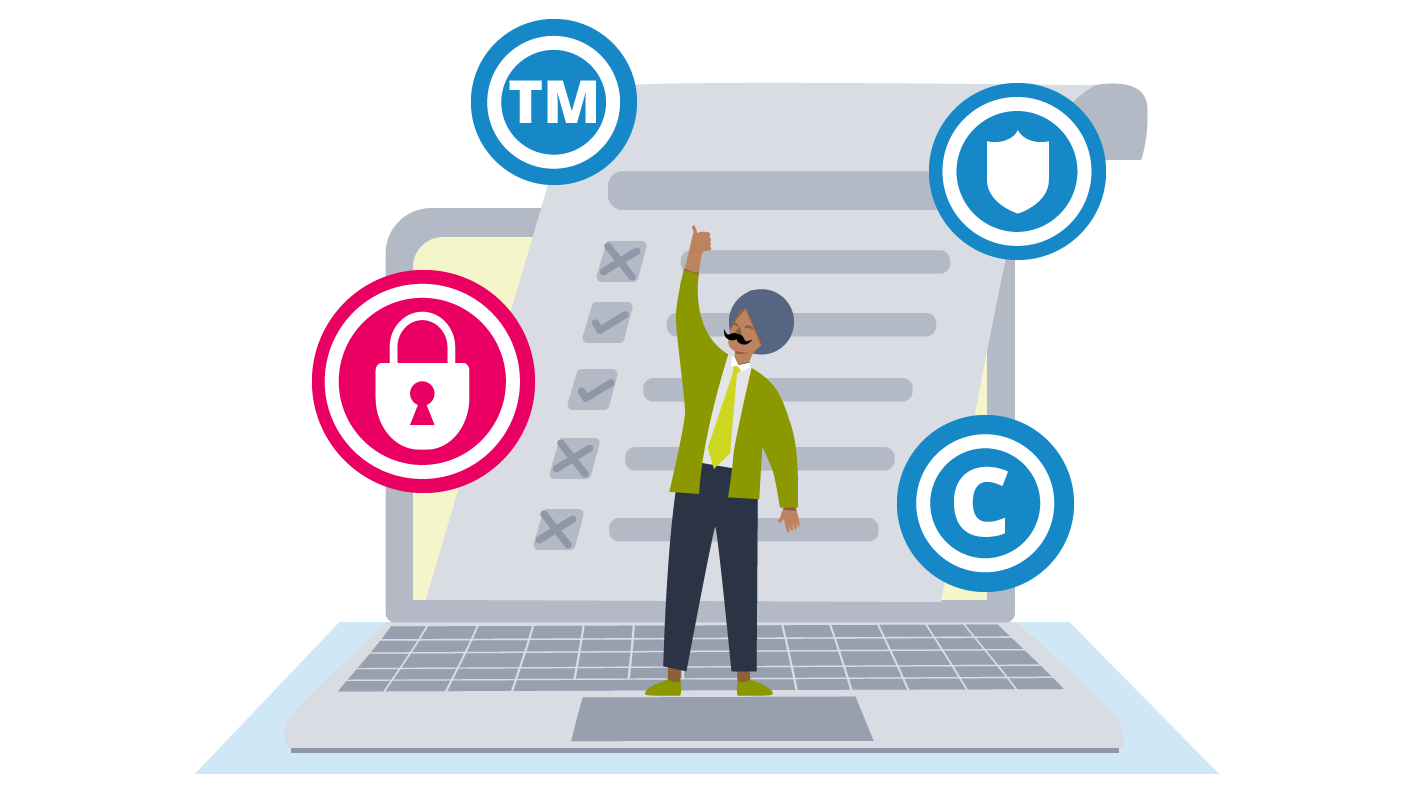Note: Information contained in these pages is intended as general guidance only. This information is not intended to be, and should not be, relied upon as legal advice. Please consult a legal adviser specialising in intellectual property law for further advice.ÌýÌý
When creating resources to share online it is important to understand the rules of intellectual property, not only to avoid breaking the rules but also to protect your own hard work and time creating original resources.ÌýÌýÂ
You should also be aware of the limitations of copyright laws, and what they do not cover. If you remember from the introduction to intellectual property, in the UK you get copyright protection automatically when you create: original literary, dramatic, musical and artistic work, including illustration and photography, original non-literary written work, such as software, web content and databases, sound and music recordings, film and television recordings, broadcasts and the layout of published editions of written, dramatic, and musical works.ÌýÌý
51ºÚÁÏ does not, however, protect an actual idea, but rather the particular way it has been expressed in your work. There is a line between copyrightable expression and non-copyrightable ideas, concepts and methods. 51ºÚÁÏ does not, therefore, protect titles, facts, ideas, concepts or discoveries.ÌýÌýÂ
You cannot stop someone from, independently and without copying your work, creating the same or substantially similar work to yours. Similarly, if another author has been inspired by your idea and has created a different resource that does not closely resemble yours in content, this does not violate your copyright.ÌýÌý
If a resource is a copy of all or a substantial part of your initial work (e.g., they just changed colours or names, or simply moved a few things around, but didn't change the structure or the main theme or important aspects of the initial work), then they likely cannot do this without your prior consent as the copyright owner of the initial work.ÌýÌý
The test as to whether a work is a substantial copy of another will, in the end, depend on the individual circumstances of each case. In most cases where an author allows their resource to be downloaded and resold, they also ask to be given attribution. See the section How to properly attribute content for more information.ÌýÌý
Protection for ideas, and not only the expression of them, can be provided with a patent. Patents are not automatically given when your work is published, but have to be applied for, and come with strict application requirements. For example, in the UK a patent can only be provided for an invention that is:ÌýÌý
- new – it must not have been made publicly available anywhere in the worldÌýÌý
- inventive – it cannot be an obvious change to something that already existsÌýÌý
- something that can be made or used, a technical process, or a method of doing something
Also, only certain types of work can be granted a patent – the following things cannot be patented:ÌýÌý
- literary, dramatic, musical or artistic worksÌýÌý
- a way of doing business, playing a game or thinkingÌýÌý
- a method of medical treatment or diagnosisÌýÌý
- a discovery, scientific theory or mathematical methodÌýÌý
- the way information is presentedÌýÌý
- ‘essentially biological’ processesÌýÌý
- software that has a ‘non-technical’ purposeÌýÌý
The process of applying for a patent from the UK’s IPO (Intellectual Property Office) comes at a cost. Applying for a patent can be complicated and you are unlikely to get a patent without professional help, for example from a patent attorney. This means that you need to consider carefully whether your ideas and work fit the requirements for a patent, whether your application is likely to be successful and whether the significant time, effort and cost is worth it.ÌýÌý
For more information on patents in the UK see ÌýÌý
If you are looking at patents in the US see ÌýÌý
If you want to secure the identity, branding and uniqueness of your resources and your Tes shop, a trademark can cover your company’s name, logos and other brand assets. This means that others cannot use your trademarked assets without the legal right (your permission) to do so. In the UK, a trademark lasts for 10 years and you need to renew your trademark for it to stay in force. Applying also comes at a cost and what you are seeking to trademark must not be the same as, or similar to, a trademark of another business that sells the same goods or services.ÌýÌý
To find out more about trade marks in the UK see ÌýÌý
For the US Patent and Trademark Office go to ÌýÌý
